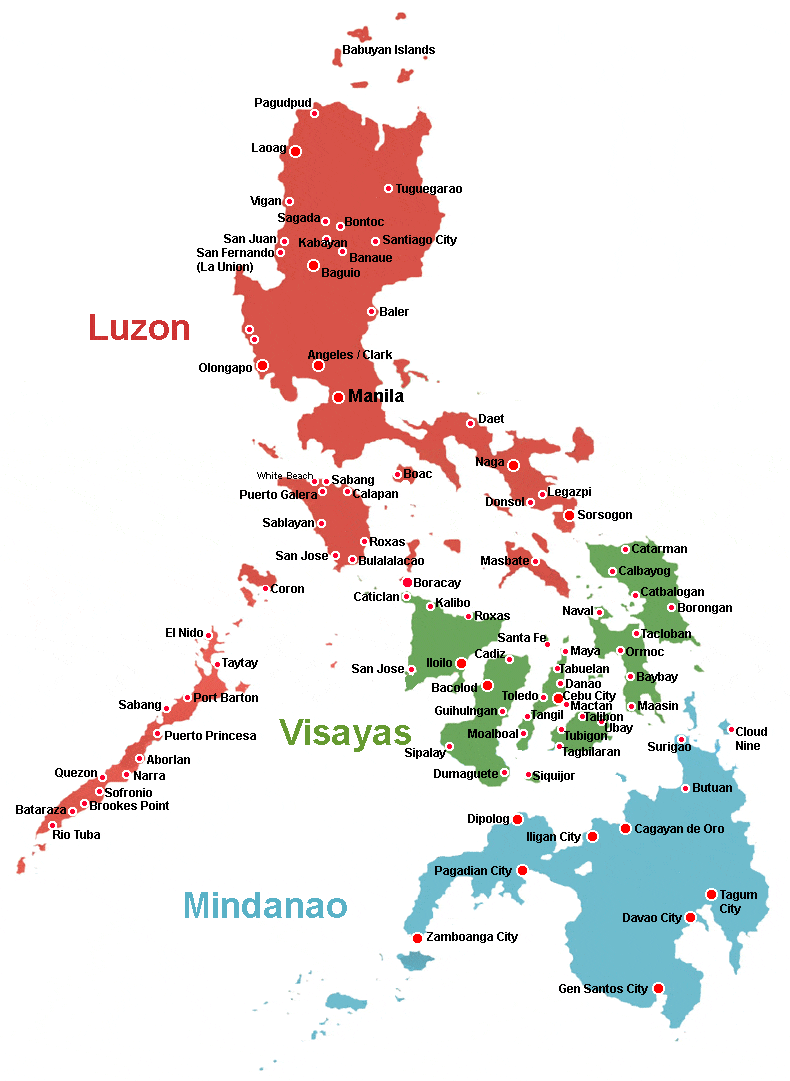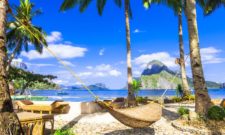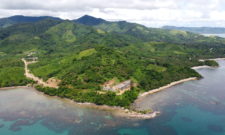INTRODUCTION TO THE REPUBLIC OF THE PHILIPPINES
Covering more than 300,000 square kilometers (more than half of mainland France), the Republic of the Philippines is home to more than 110 million people. Philippines properties for sale benefit from the attractive landscapes and welcoming people.
The Philippines is a country made up of an archipelago of more than 7000 more or less vast islands located to the Southeast of the Asian continent, thus locating the separation between the China Sea and the Pacific Ocean.
There are three major geographic areas: Luzon, Visayas and Mindanao.

• Luzon is the largest island, home to the capital of the Republic of the Philippines, Manila (1.6 million inhabitants), as well as the country’s largest city, Quezon City (near 3 million inhabitants).
• In the center, the dense group of Visayas is a grouping of smaller islands which includes the islands of Negros, Cebu, Bohol, Panay, Masbate, Samar and Leyte.
• Finally, in the south, Mindanao is the second largest island by area; its main cities are Davao (1.5 million inhabitants), Marawi, Zamboanga and Cagayán de Oro.
This central position between continental Asia and Indonesia has enabled the Filipino people to create a strong and marked cultural identity over time; notably via an eventful History.
AN ANIMATED HISTORY
Manufactured tools dating back over 700,000 years have been found in the Philippines, testifying to an ancestral human presence.
The millennia then go by with their lots of cultural and commercial exchanges as well as population movements, in particular with present-day mainland China and the countless other islands now making up Malaysia and Indonesia.
Over time, the Philippines participate in the development of a first world economy, then integrating into Asian trade routes from the year 1000, which cause the Philippines to fall under Chinese influence in the 12th century.
“Discovered” on March 16, 1521 by Ferdinand Magellan, Portuguese explorer traveling under the Spanish flag, the archipelago was baptized Philippines in 1543, in honor of the child of Spain, future Philip IV. The country was to remain under the domination of the Spanish crown until 1898. The Treaty of Paris then put an end to the Spanish-American war, and Spain controlled the Philippines from the United States.
The country achieved independence in 1946, as promised by the United States during the Second World War.
It was after the Second World War (after a period of occupation by the Empire of Japan) that the country achieved full independence as promised by the United States during the war.
Thus, over time, under the influence of Chinese dynasties, then Spanish religious orders and finally the American world, the Philippines developed a unique culture in Southeast Asia, while retaining many rites and traditions specific to their culture.
A COUNTRY THAT BUILT ITSELF
At the end of the war, the country experienced a period of internal political tension before stabilizing and appearing as one of the most developed countries in Asia.
This was followed by a quieter period of slow economic growth coupled with a population explosion which then led to a decline in the purchasing power of the Filipinos. However, this demographic transition then initiated today allows the Philippines to have a real diplomatic weight and influence in its region.
The country is in a period of economic development without precedent since the end of the 1990s and the massive influx of foreign capital, especially in information and communication technology at the turn of the 2000s.
Thus, the country has experienced strong growth rates since 2010 with nearly 7% of annual GDP growth (6.5 in 2019), which is not about to stop as the country becomes more integrated more to globalization.
THE PHILIPPINES, A LAND OF FUTURE
Thus, through its tumultuous history, the country has cultivated its own identity, thanks to Chinese, Spanish and then American influences. What makes it a unique country, as much by its landscapes, as by its welcoming and warm population.
Its economy is currently flourishing, and current economic indicators suggest that the Philippines is beautiful and good, a land of the future with multiple economic opportunities.




Commentaire (1)
Leave a comment